Fast fashion: How technical running shoes became cool
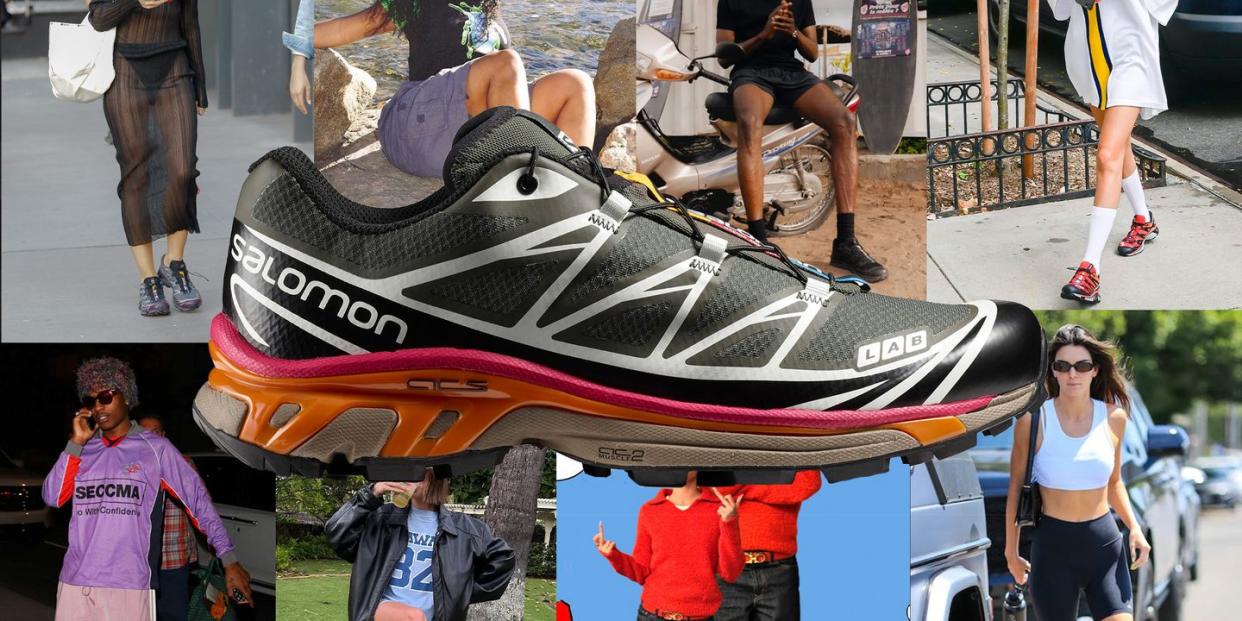
A strange thing is happening on the streets of the world’s most famous fashion cities. In New York to Berlin, hipsters have ditched their vertiginous stilettoes and tabi boots to rock some of the most high-tech (and expensive) running shoes on the market. And not to run a marathon PB, or even to nip to the shops for some Minstrels, but to add an exclamation POINT to a new fit on a Big Night Out. For actual Fashion. We’re talking Alphaflys in the club or wearing a pair of Salomon XT-6s for a little catwalk around Colombia Road Market collecting content and cacti. Bear in mind that the XT-6 is a shoe Salomon describes as “the preferred footwear of world-class athletes for ultra-distance races under harsh conditions”. A ballsy claim you’d expect to be tested by an ultrarunner, caked in sunblock and anti-chafe in a desert, not by having an elbow off with a creative director over a tray of succulents. These are the kind of high-tech shoes you’d expect to see at the UTMB, so it is genuinely perplexing to spot them under jeans and a nice top instead of 3-inch running shorts. I mean, they’re more Matterhorn than Erewhon bbz, or at least, they were designed to be. So, what gives?
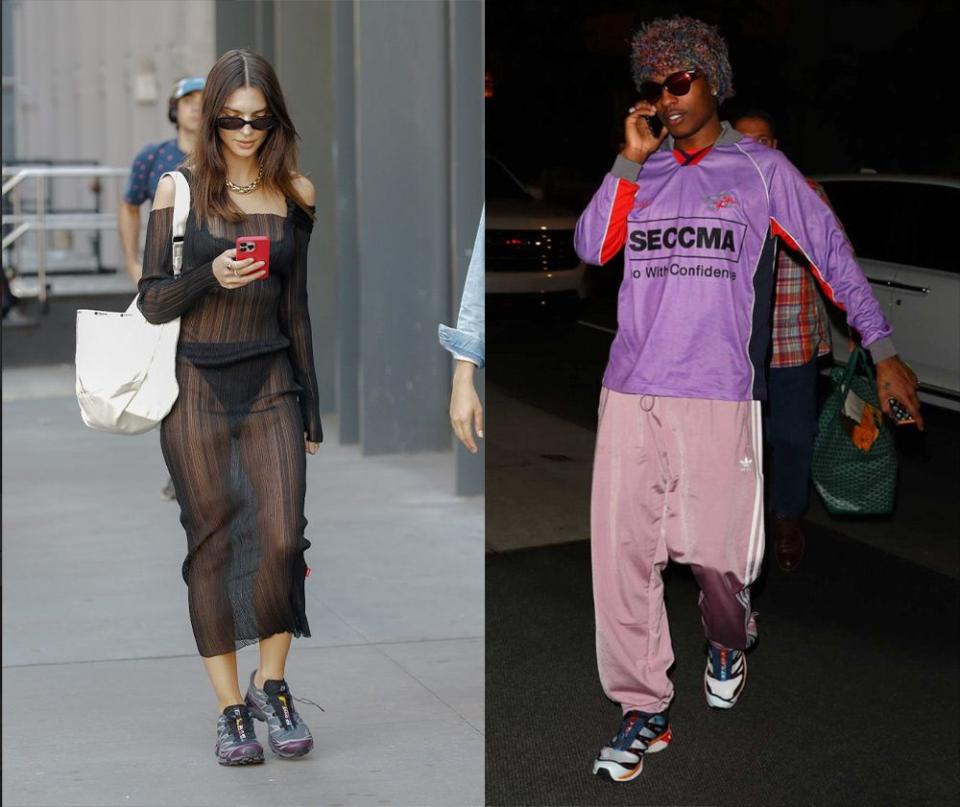
From A to XT-6
While Gen X was more about XTC, clean living Gen Z is all about the XT-6: the shoe of choice for Gen Z mega-influencers like supermodel Bella Hadid and multi-hyphenates like Emily Ratajkowski (an XT-6 Skyline fan). The influencer’s influencer Kylie Jenner, meanwhile, loves her Salomon’s XT-6 Recuts. The obsession also spans the gender divide, with actor/director Bradley Cooper favouring the Salomon X Ultra 4’s, prompting sneakerhead bible Hypebeast to anoint him a “simple Salomon style icon”. Megastar comedians Chris Rock and Adam Sandler have both been regularly spotted rocking some not so hidden gems from French brand Hoka, (Project Cliftons for detail fans), as have entertainers Camila Cabello and Harry Styles, bringing a formerly niche footwear purveyor firmly into the spotlight. The numbers bear this out with searches for Salomon XT6 +75% year on year at Pinterest, with 59% of searches coming from Gen Z users. Likewise searches for Hoka were up 30%, with 47% coming from Gen Z users. But the question is, how did we get here?
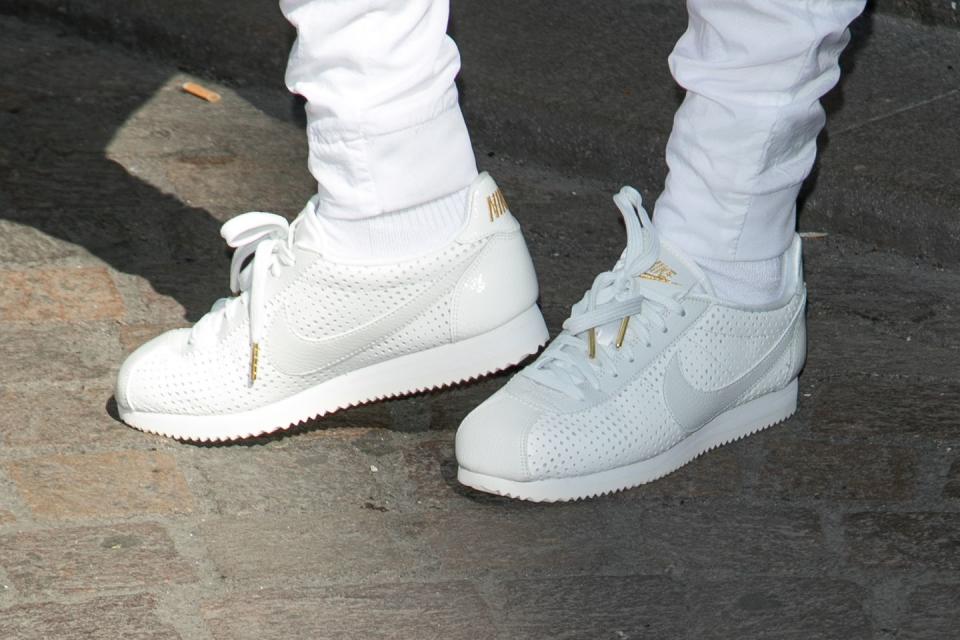
The long run
Running wear and fashion have plenty of history. Perhaps one of the best examples of this is the Nike Cortez. Launched as a technologically advanced running shoe to coincide with the 1972 Munich Olympics, the Cortez is the foundation the nascent Nike behemoth was built on. Though its innovations were quickly overtaken, the Cortez jumped from the track to the entertainment world when worn by Farah Fawcett-Majors on global TV hit Charlie’s Angels. Elton John’s iconic Dodgers baseball costume featured a custom pair of Cortez during his 1980 world tour shows at Dodger Stadium. The Cortez was adopted by hip-hop stars like NWA, especially Easy-E, and also Snoop Dogg, becoming inextricably linked with LA gang culture in the 80s and 90s. Forrest Gump repped a patriotic red, white, and blue version in 1994. LA native Kendrick Lamar championed a Cortez return, dropping a much hyped collab in 2018. The following year, Nike released a collaboration featuring the Cortez and the Tailwind 79 with Netflix mega-hit Stranger Things that nailed nostalgia and newness. Perfect for running up that hill.
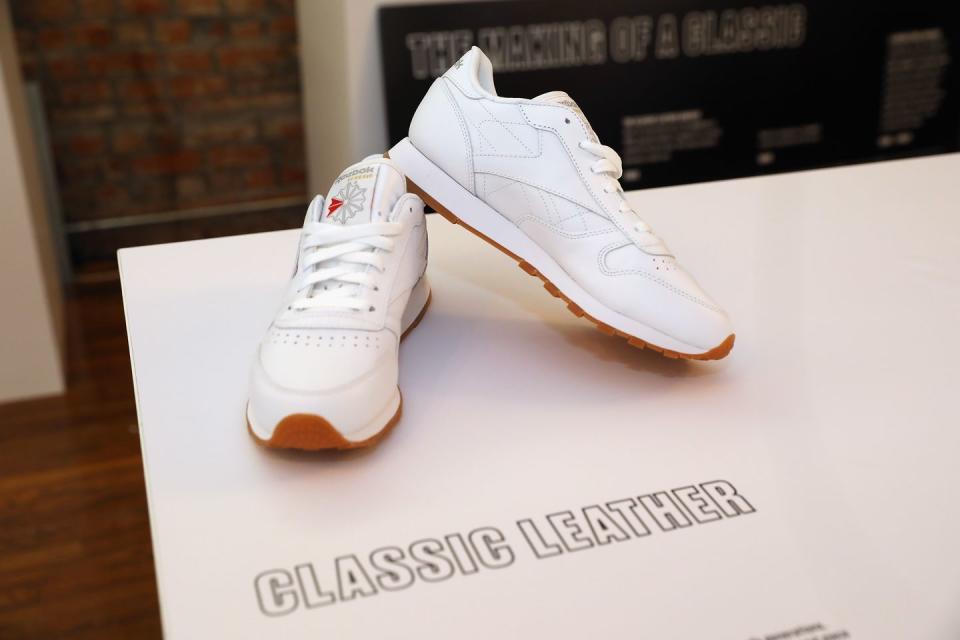
A Classic look
The Cortez isn’t the only running shoe to have the entertainment world in a chokehold. In the UK, the Reebok Classic had clubbers in ecstasy as house music was in its infancy. Mike Skinner of The Streets even namechecked them in his track ‘Let’s Push Things Forward’. In 2017 Adidas restyled the Rom (released for 1960 Rome Olympics) and released a limited-to-100-pairs edition of the Rom Zissou as seen in The Life Aquatic with Steve Zissou. But it’s not just cultural nostalgia that drives sneaker trends. Hype created by special releases with very limited availability has become an integral driver of success. Since 2009 Palace, whose Friday drops inspire queues of devotees, have underlined the cultural relevance of the Reebok Classic with a run of highly sought after releases. Perhaps the most hyped was Adidas’ collaboration with Kanye West’s billion-dollar Yeezy brand, that created a resale frenzy before the partnership collapsed acrimoniously following West’s antisemitic comments. Debuting in 2015, Yeezy’s signature oversized aesthetic with military and tactical influences is arguably one of the most influential on the development of streetwear and footwear trends in the last decade. While not technical (or technically) running shoes, the Yeezy release pattern, perfected by brands like Palace and Supreme, helped define the limited drop model that helped propel carbon-plated race shoes like the Nike AlphaFly 3 to sellout status. Simultaneously, Demna and Guram Gvasalia (high profile designers) were developing their own streetwear influenced aesthetic, (of which West was an early adopter, as was Rihanna), via their brand Vetements, which launched in 2014 in Paris. Demna then joined luxury house Balenciaga after just three seasons, where in 2017 he would launch the Balenciaga Triple S, an oversized silhouette based on classic running styles, kicking off the “ugly trainer” trend, which would dominate for the next few seasons.
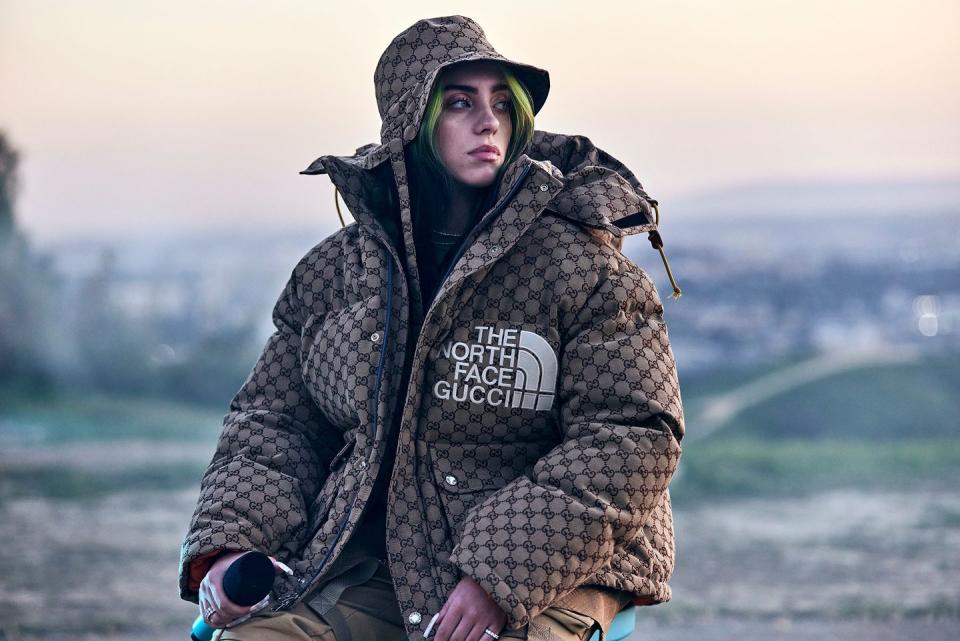
Gore-Tex or go home
You can trace a direct line from the ugly trainer to the current rise of the XT-6 and the Clifton, and the popularity of shoes from technical running brands like On and Asics as everyday wear, but you have to detour through the Gorp Bro home ground. Emerging in the mid 2010’s, Gorpcore (named by writer Jason Chen) saw technical outerwear from brands like The North Face, Patagonia, and Arc’Teryx pepper the wardrobes of urban millennials and celebrities including ASAP Rocky and Drake for their style and their mountain proof credentials. Style that was enhanced by high-profile collabs with luxury brands – Ciao The North Face X Gucci. It wasn’t just aesthetics and functionality; the conferred association with outdoorsy and eco-conscious brands was catnip to socially minded millennials. ‘Technical fabrics have been blending into our everyday lives for a long time now as brands have looked to the outdoors for inspiration, especially with manufactures like Gore-Tex, Primaloft and Schoeller being used in more elevated outerwear. High functioning clothing ticks so many boxes, and design-wise it’s easy to incorporate into one’s wardrobe,’ says style director Olie Arnold.
That desire for aesthetics plus functionality expanded into footwear. Purists will cite the Adidas X Raf Simons Ozweego 1, which pre-dated the Triple X by several years, as a pivotal design moment in the drift towards chunkier aesthetics in footwear. But fashion writer Dal Chodha dates it back even further to a surprising source. ‘I think we can trace back to Pheobe Philo’s Céline and its furry “birkenstocks”’ c 2012. Although not a sports shoe, it kickstarted the fetish that designers have for looking at foot wellness shoe brands known for their functional, practical benefits,’ says Chodha. ‘After more than a decade of it with Crocs, Uggs, Tabis etc being a mainstay, designers are pushing it further.’
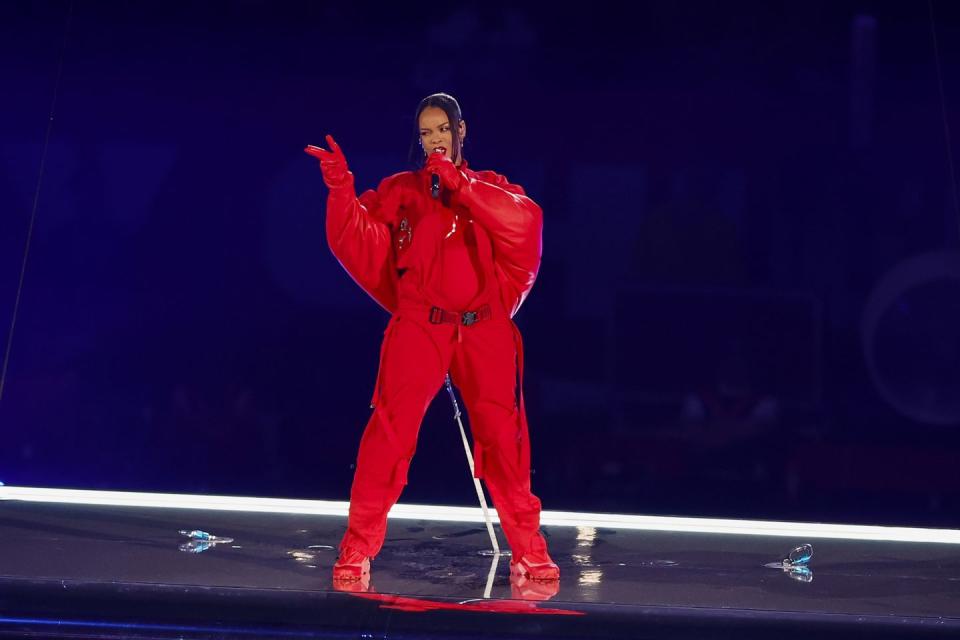
Individual pursuits
Just when everyone was deifying technical outerwear, we were all forced indoors. Covid brought seismic changes to how we lived, worked, and dressed (or didn’t bother to dress), with many wearing pyjamas and loungewear almost 24/7, even for work. And while some designers have pushed the return of the suit post lockdown, the thought of giving up this softer aesthetic is proving about as popular as an employer mandated return to office. Enter the XT-6, Clifton and plushly cushioned cohorts like the On Cloudmonster 2 for day-to-day wear. ‘Post pandemic people were still in a comfortable zone so looking at fashionable ways to wear comfort has been key,’ says Warren Alfie Baker red carpet stylist to A-List actors Andrew Garfield and Andrew Scott. The pivot from the Hedi Slimane Dior Homme skinny jean era to wider cut trousers ushered in the exaggerated trainer aesthetic but the mid-20’s focus on elevating loungewear brought even more comfortable fits, with softer fabrics, even more generous cuts, unstructured shoulders and exaggerated proportions, particularly in trousers, so balancing the proportions became necessary. ‘We know a larger running shoe with a skinny jean is not good on anyone,’ explains Baker, ‘It goes back to that 90’s feel, we love the 90’s wide-leg pant with a cool sneaker.’
Arnold agrees on the importance of aesthetics. ‘Pieces like Salomon trainers can easily become an everyday staple offering comfort and protection making it the ultimate casual attire for weekends, and depending on where you work, the office too,’ he says. ‘But, really, I think the reason is much more about aesthetics than practicality – men can finally geek out about product and look relevant. It also offers a refined yet casual feel that men of any age can get onboard with,’ says Arnold. In 2023 Gen Z, Tik-Tok, Gorp, post-Covid comfort chic and Salomon would combine to break the the internet when Rihanna wore MM6 Maison Margiela X Salomon Cross Low sneakers with her custom Loewe jumpsuit and duvet-inspired coat for a global audience of 21 million viewers, cementing Salomon’s fashion credentials for perpetuity.
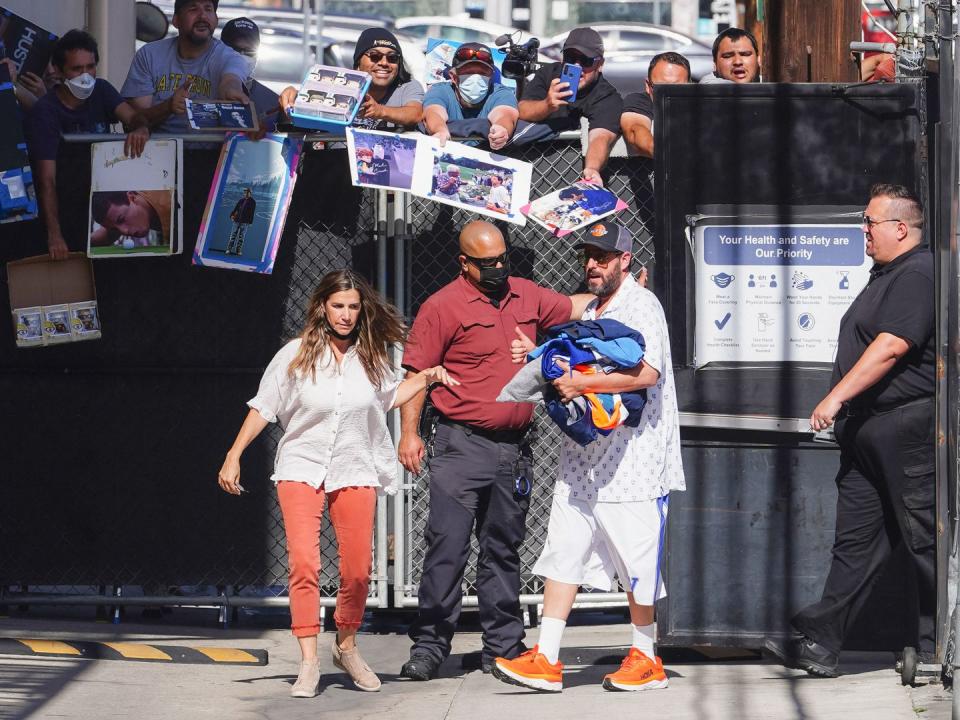
Best Foot Forward
That said, practicality has its place, especially in a world where every step is counted, where we’re increasingly conscious of being active. ‘Wearing comfortable, supportive, running-inspired shoes is going to allow optimal foot biomechanics, an efficient walking gait pattern and provide adequate shock absorption,’ says William Chen, physiotherapist at The Running Room London. ‘Trainers with good cushioning, width and lockdown are going to help support feet, ankles, knees, hips and even your lower back if you’re standing or walking all day.’ And while gym bros swear by wearing flat shoes like Vans or Converse for lifting, especially when squatting, wearing them all day can lead to issues. ‘Wearing trainers with poor support and cushioning may increase your risk of getting plantar fasciitis and Achilles tendinopathy, and if you’re already experiencing foot and ankle pain, it may exacerbate the symptoms,’ says Chen. ‘If you’re someone who gets sore soles of feet or ankles from walking all day in flat, narrow trainers like Vans, Converse or ballet flats with minimal cushioning, you’re more likely going to have less discomfort wearing something that has a thicker midsole with a more rocker style sole.’Nobody will be surprised to hear that they also trump stilettoes. ‘High heels can increase your risk of getting calf tightness, forefoot pain, and can exacerbate a painful bunion if you have one, and it simply does not allow your feet and toes to move the way it's designed to, so your walking economy and biomechanics is impacted.’ But before you abandon any other shoe option completely be aware that they’re not perfect. ‘One downside of these chunky trainers is that they can be heavy, which can cause some fatigue in the muscles at the front of your shins like the tibialis anterior,’ warns Chen.
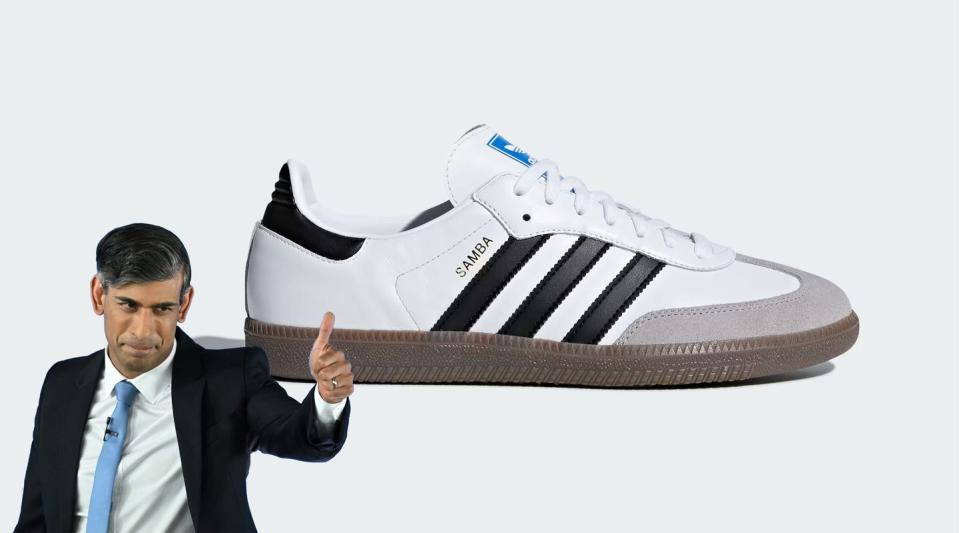
Photo Finish
Which brings us to today. Gen Z’s desire for authenticity has also played a role in the rise of shoes like the XT-6, says Chodha, ‘Design and fashion have become a little aimless over recent years; we always seem to be asking, “Who is it for? Who can afford it? Is it even good for us” – that has forced designers to go looking at utility and the body in a more intense way. So looking at outdoor pursuits, for example, makes sense: it reengages design and clothing with the body and reenforces the utilitarian focus that many of us have when looking at things to buy.’ He goes on, ‘Gen Z have also reinforced an idea that you need to know the originators of things. Knowledge and visibility of the more niche sneakers/shoe brands have come out of the nerdy scholarship you find on Tiktok.’
The AlphaFly, XT-6 and their ilk hit that sweet spot that modern consumers want: authenticity in design, functionality, aspiration to lifestyles that are healthier and more in-tune with nature, hyped social media status, celebrity endorsement, nerdy minutiae and, crucially for right now, comfort. All of which suggest that this trend will run and run.
‘We were always heading this way in adopting a leisurely approach to dressing,’ says Arnold. ‘I think what we are seeing is the tip of the iceberg and we’re in for a totally new level of technical product and fashion joining forces.’ But it’s wise to remember that fashion is notoriously fickle. Just ask the Adidas Samba. One minute you are cock of the three-stripe walk, the next Rishi Sunak wears you in a cringey staged photo op, giving the entire fashion community a massive collective ICK and you are fashion roadkill, leaving fashion editors rending their Yohji in despair. In the words of German philosopher Heidi Klum, ‘In fashion, one day you are in, the next you’re out. Auf wiedersehen.’
Running shoes and fashion: a timeline
1972 – Nike launch the Cortez for the Munich Olympics.
1978 – Onitsuka Tiger release the California featuring a reflective strip for visibility at night.
1983 – Reebok Classic is released.
1985 – First Air Jordan shoe is released by Nike
1991 – Asics release the Gel-Lyte III
1996 – Adidas launch the Ozweego a lightweight running shoe with adiPrene cushioning.
2009 – Hoka One One is launched
2010 – On Running launches
2013 – Adidas x Raf Simons’ Ozweego revealed – purists cite the Simons’ reinvention as kickstarting the ugly shoe trend.
2013 – Palace release their first shoe with Reebok
2014 – Salomon collaborate with cult French Boutique “The Broken Arm’.
2015 – The Boost 750, the first shoe in the Yeezy collaboration between Kanye West and Adidas, is released.
2017 – Balenciaga’s Triple S launches in Paris – equally reviled and revered, it dominates the fashion conversation.
2017 – Asics collaborate with Kiko Kostadinov on the Gel-Burz, its success turns into a long running collaboration.
2018 – Hoka drop their first collaboration with Japanese-America brand Engineered Garments.
2019 – Prada Cloudburst – the ever-increasing proportions of the ugly trainer cohort prompt department stores to label styles as “not for running”.
2019 – Dame Vivienne Westwood and Asics reveal the Gel-Mai.
2020 – Nike drop the all-black Waffle Racer, designed in collaboration with Comme des Garcons.
2012 – Hoka and Moncler release the Mafate Speed 2 suffusing trail runners with Italian Alpine chic.
2022 – Salomon release their first collaboration with MM6 Maison Margiela, Rihanna wears the red variation during her Super Bowl performance.
2022 – On collaborate with Spanish luxury brand Loewe, Creative Director Jonathan Anderson sprinkles his magic.
2024 – Hoka team up with Japanese uber designer Junya Watanabe’s FW24 collection for a new take on the Ora Primo.
You Might Also Like


